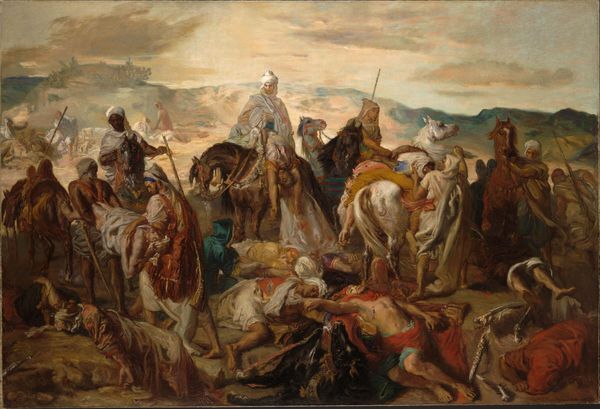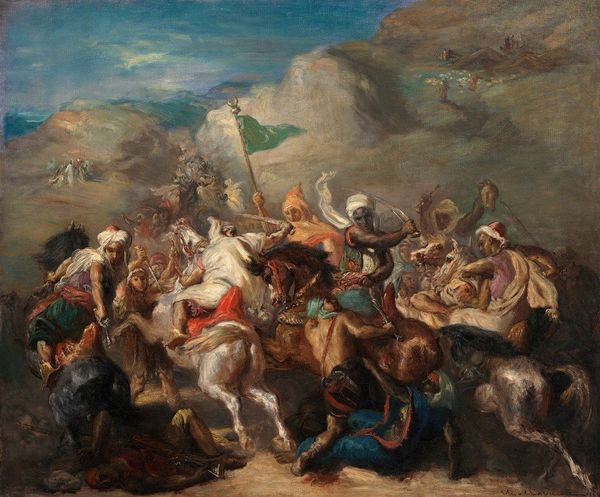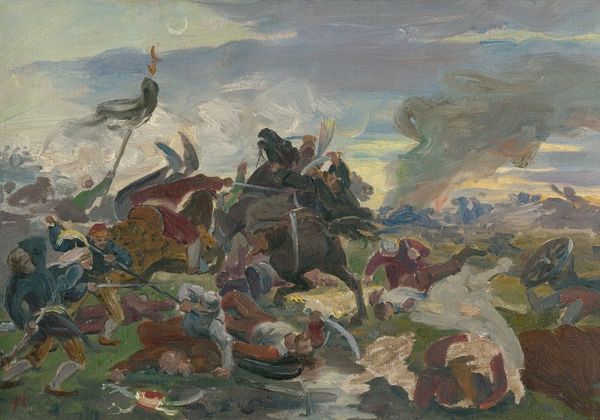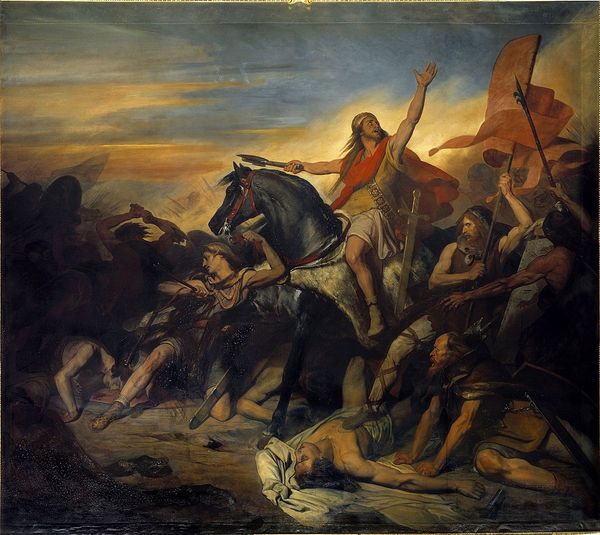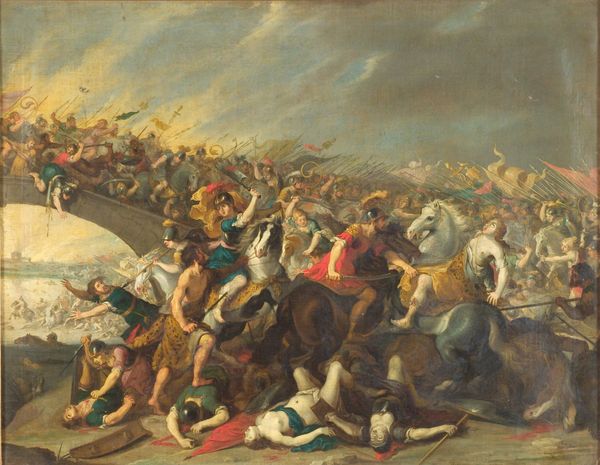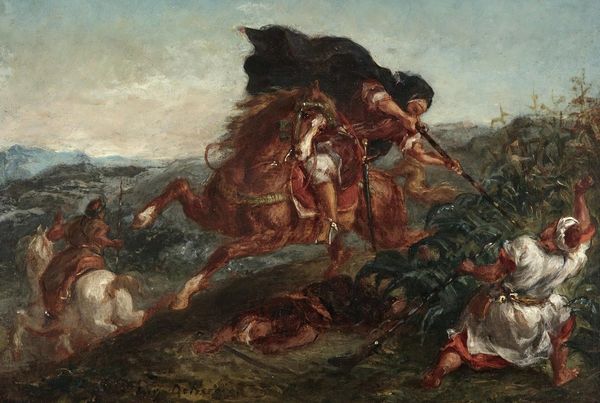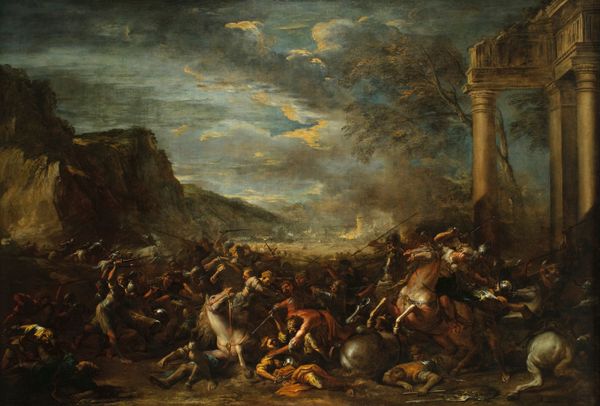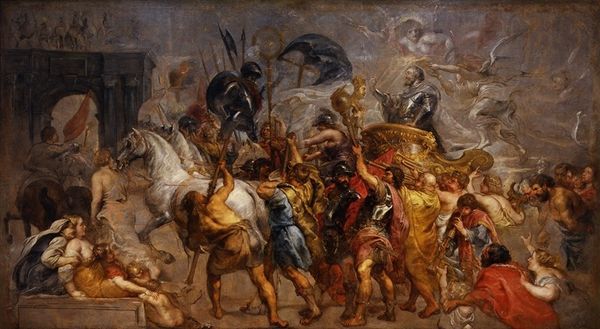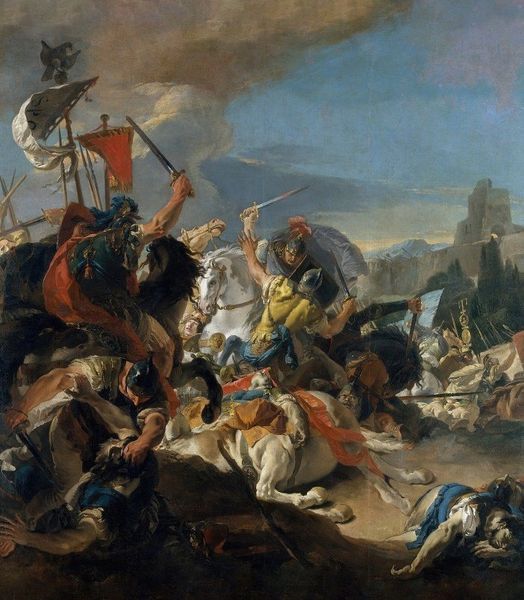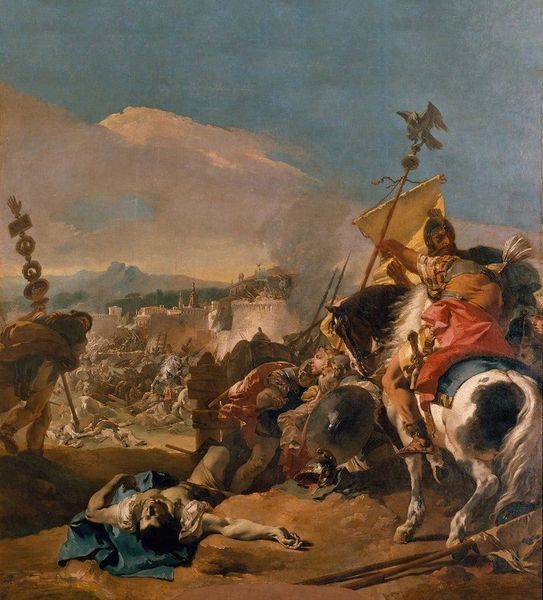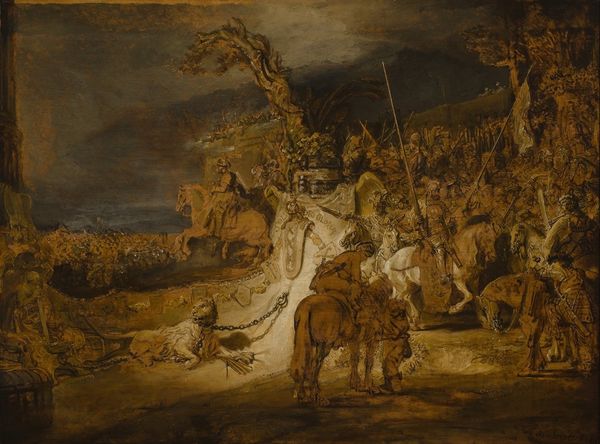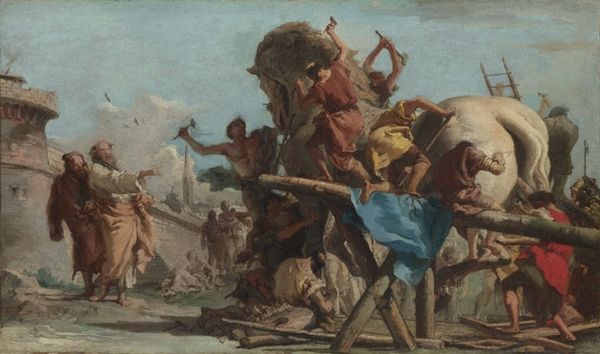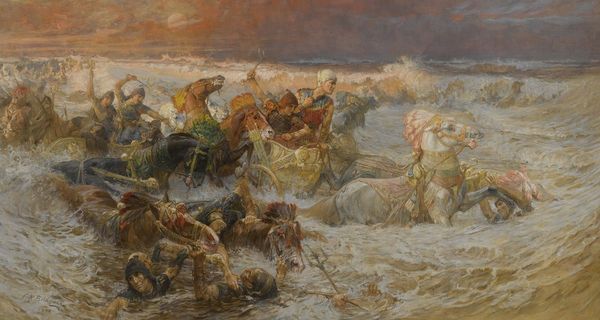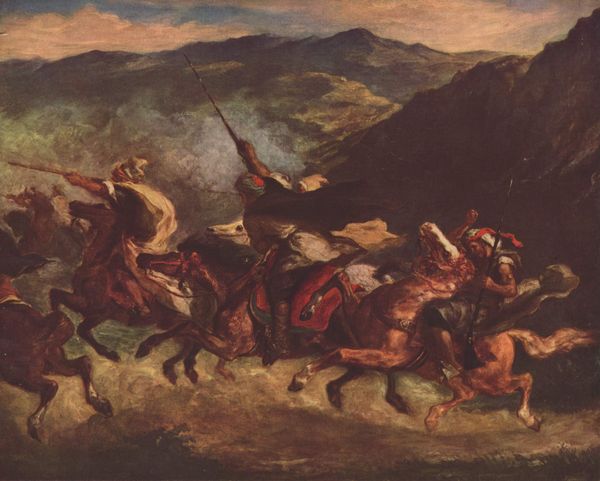
painting, oil-paint, oil-on-canvas
#
painting
#
oil-paint
#
landscape
#
figuration
#
oil painting
#
romanticism
#
history-painting
#
oil-on-canvas
Dimensions: 59.1 × 78.1 cm (23 1/4 × 30 3/4 in.)
Copyright: Public Domain
Curator: What strikes me first about Théodore Chassériau's “Saracens and Crusaders,” painted around 1846, is the overall sense of brooding darkness. The way the light catches the figures only accentuates the somber mood. Editor: Yes, that oppressive sky really sets the stage for the brutal scene unfolding beneath it. Chassériau seems fascinated by the power dynamics between these warring cultures, each bearing the weight of their respective beliefs. What symbolic significance do you read in their conflict? Curator: The standard-bearer, that green flag with the crescent moon, contrasts dramatically with the fallen soldiers below. The Saracen flag is raised high as a statement of victory and resistance but it carries deeper implications. The flag is both a representation of faith and a banner for cultural identity, but what’s interesting is that its symbolic power persists even amidst such grim human cost. Editor: Indeed. The discarded armor amongst the fallen figures evokes something about sacrifice. Each glint of light off of their armament and attire calls into focus questions about European ambitions in North Africa. Was the imagery perhaps intended as propaganda for recruitment? The painting definitely embodies the French Romantic fascination with the Orient. Curator: The horses too, don't you think they're loaded with visual information? Look at how the central figure rides atop that white horse, while a darker mount stands at the left – almost a shadow looming large. Editor: I see what you mean. That juxtaposition hints at inherent biases present during colonial conquests; each symbol carrying a different ideological connotation that served as psychological justification. The viewer at the time no doubt absorbed those visual cues on a very deep level. Curator: The way he balances history painting and landscape reminds me of how intertwined the past and environment really are in shaping our understanding. One’s gaze keeps getting drawn back up to the dark, troubled horizon after dwelling on the fallen soldiers, reminding us that history keeps moving relentlessly onward. Editor: And it's this act of looking back that provides a clearer vision for the future, challenging us to understand how conflicts are woven within cultural identities even to the present day.
Comments
No comments
Be the first to comment and join the conversation on the ultimate creative platform.
